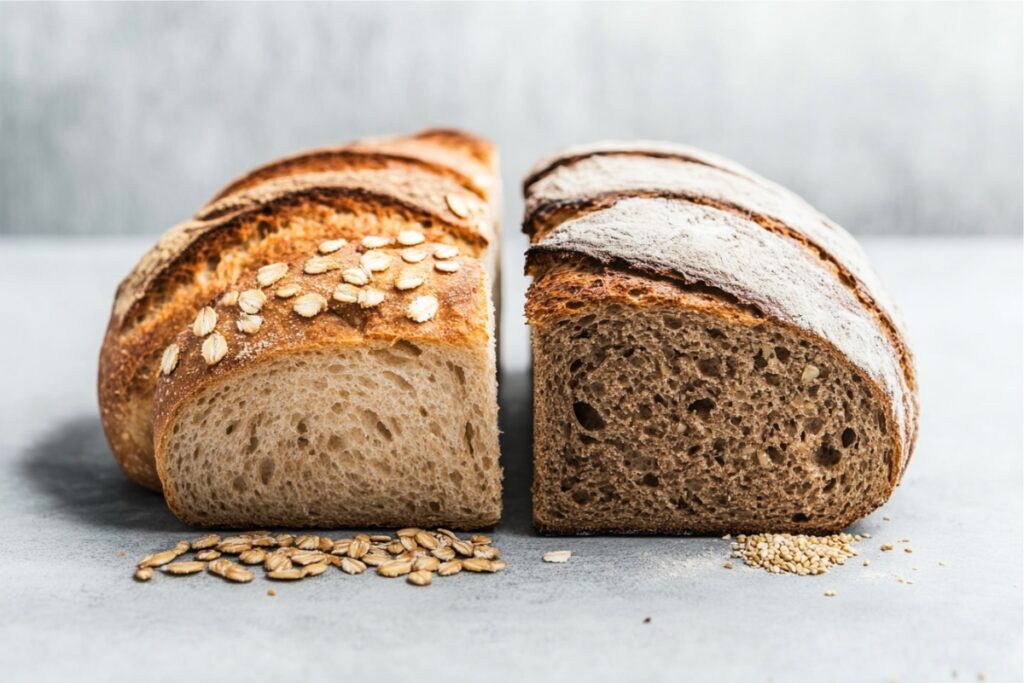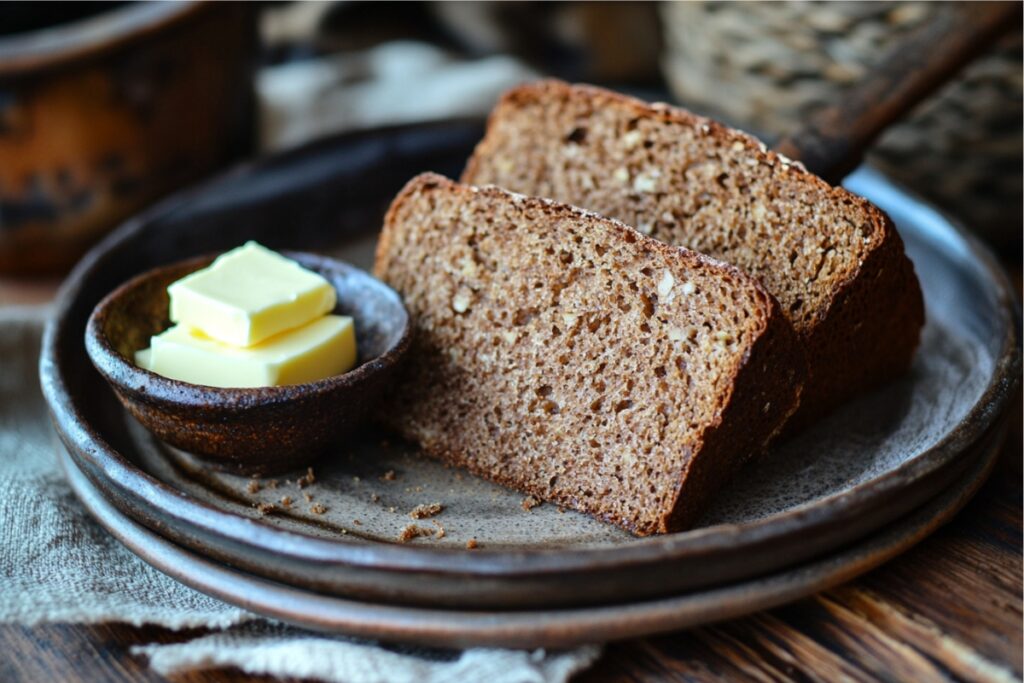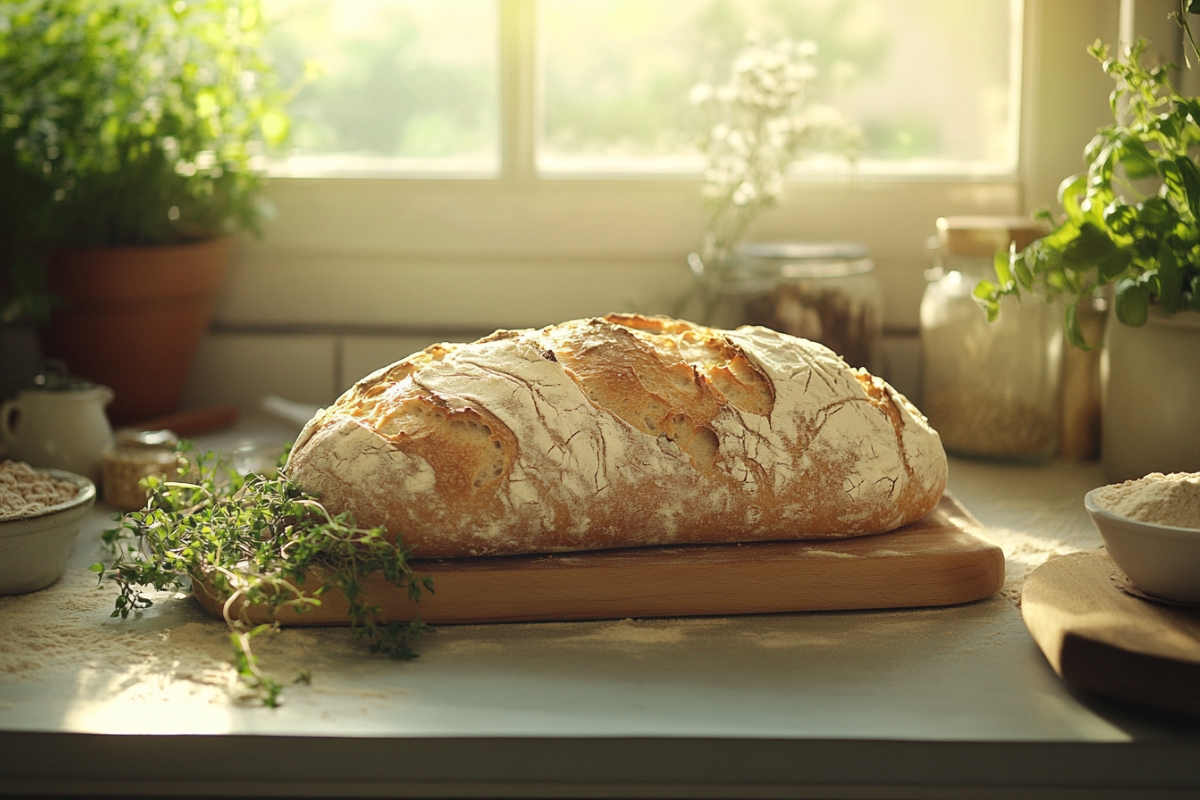When it comes to bread, few varieties have captured the public’s imagination like sourdough. Its tangy flavor and rustic appeal make it a favorite on tables worldwide. But for those navigating the tricky waters of gluten sensitivity or celiac disease, the question arises: Is sourdough bread gluten free? This article dives deep into that very question, exploring the science, the myths, and even the gluten-free alternatives that might just work for you. Let’s uncover the facts!
Understanding Gluten and Sourdough Bread
What Is Gluten?
Gluten is a protein found in grains like wheat, rye, and barley. It’s what gives bread its elastic texture and helps it rise during baking. While many of us enjoy bread without a second thought, gluten can spell trouble for people with sensitivities or celiac disease. For these individuals, even a small amount of gluten can trigger uncomfortable or bad symptoms.
How Is Sourdough Bread Made?
Sourdough bread stands out because of its fermentation process. Unlike regular bread, which uses commercial yeast, sourdough relies on a wild yeast starter. This starter is a mix of flour and water that captures naturally occurring yeast and bacteria. Over time, the fermentation process gives sourdough its signature tangy flavor and chewy texture.
The basic ingredients for traditional sourdough bread include:
- Wheat or rye flour
- Water
- Salt
These ingredients, particularly the flour, are what make the question “Is sourdough bread gluten free?” so complex.
Does Fermentation Affect Gluten Content?
Here’s where things get interesting. During fermentation, the bacteria in the sourdough starter break down some of the gluten in the flour. This process makes sourdough easier to digest for some people, particularly those with non-celiac gluten sensitivity. However, fermentation doesn’t eliminate gluten entirely. That means traditional sourdough is not safe for people with celiac disease.
Is Sourdough Bread Gluten-Free?
The Gluten-Free Myth
Many people think sourdough bread is gluten-free because of how it’s made. However, the truth is more complicated. Regular sourdough bread uses wheat or rye flour, which both contain gluten. The way sourdough ferments does break down some gluten, but it doesn’t get rid of it completely. This makes sourdough unsafe for people with celiac disease or those who need to avoid gluten entirely.
The confusion happens because some people with gluten sensitivity—not celiac disease—say they can eat sourdough bread without problems. While this might sound good, it doesn’t mean sourdough is truly gluten-free.
If you need bread without gluten, you can try special recipes like this pumpkin sourdough bread made for gluten-sensitive diets.
Can Sourdough Be Gluten-Free?

Yes, sourdough can be made gluten-free, but it takes a different approach. Gluten-free sourdough uses flours like rice, almond, or gluten-free blends. These ingredients make sure the bread is safe for people who can’t have gluten.
To make gluten-free sourdough, you’ll need a starter made only from gluten-free flour. This prevents any chance of contamination. The texture and taste may not be exactly like regular sourdough, but it’s a healthy and safe choice for people who need gluten-free options.
For clear steps, check out this guide on making sourdough garlic bread with tips for switching to gluten free flours.
Benefits of Sourdough for Gluten-Sensitive People
Why Some Gluten-Sensitive People Can Eat Sourdough
Sourdough bread can be easier to digest because of the way it’s made. The good bacteria in the starter help break down gluten, which lowers its levels and makes it gentler on the stomach. That’s why some people with gluten sensitivity, not a celiac disease—find sourdough less troubling than other breads.
The long fermentation also breaks down phytic acid in the flour. This helps your body take in more nutrients and improves gut health. Still, these benefits don’t mean regular sourdough is gluten free. Always pick gluten free recipes if gluten bothers you.
Nutritional Value of Sourdough Bread

Sourdough bread contains more nutrients than many other types of bread. It has:
- B vitamins
- Antioxidants
- Minerals like magnesium and zinc
Because sourdough ferments slowly, it also has a lower glycemic index. This can help people manage their blood sugar levels. These benefits make sourdough popular, but they don’t make it safe for people who need to avoid gluten.
To learn more about how sourdough fits into a healthy diet, check out this article on whether sourdough bread is healthier.
Gluten-Free Sourdough Bread Recipes
Essential Ingredients for Gluten-Free Sourdough
Making gluten free sourdough bread starts with picking the right flour. Since wheat and rye contain gluten, you’ll need alternatives like:
- Rice flour
- Almond flour
- Sorghum flour
- Gluten-free flour blends
Each of these flours brings its texture and flavor, so experimenting with blends can help you find the perfect match. Another critical component is a gluten-free sourdough starter. To ensure it stays gluten free, always feed it with gluten free flour and keep it separate from any gluten containing elements.
For more on adapting traditional sourdough methods, you might explore this helpful guide on how to make sourdough garlic bread.
Step-by-Step Guide to Baking Gluten-Free Sourdough
- Prepare Your Starter: Start with a gluten-free sourdough starter and feed it for a few days until it’s bubbly and active.
- Mix the Dough: Combine your gluten free flours, water, starter, and a bit of salt. For added flavor, you can include honey or herbs.
- Let It Rise: Leave the dough to ferment for 4–6 hours, depending on the temperature.
- Shape the Dough: Gently shape your dough into a loaf or roll.
- Bake to Perfection: Bake your sourdough in a preheated oven until it develops a golden crust.
Troubleshooting tip: If your bread turns out too dense, experiment with longer fermentation or different flour blends.
For more ideas, consider checking out other recipes like pumpkin sourdough bread.
Common Challenges and Solutions
Sticky Dough: Gluten free doughs can be harder to handle. Use wet hands or tools to shape the dough.
Dense Loaves: Add a little extra hydration or extend the fermentation time to get a softer crumb.
Starter Troubles: If your starter isn’t bubbling, check the water temperature and feeding schedule.
Expert Insights and Studies on Sourdough and Gluten
What Studies Say About Sourdough and Gluten
Research shows that sourdough natural reduces gluten levels in bread, but it doesn’t eliminate them. For people with non celiac gluten sensitivity, sourdough’s lower gluten content and improved digestibility can make it a better choice than conventional bread. However, it’s important to note that sourdough bread is not gluten free unless specifically made with gluten free ingredients.
Studies also highlight sourdough’s nutritional advantages. Its fermentation process breaks down compounds that interfere with mineral absorption, making nutrients like magnesium and zinc easier to absorb. These findings underline why sourdough is praised as a healthier bread option.
For a deeper dive into the science of sourdough, check out this article on whether sourdough bread is actually healthier.
Expert Opinions
Experts often recommend sourdough for people who have mild gluten sensitivities but not celiac disease. Nutritionists point to sourdough’s long fermentation as the key to its benefits. Gastroenterologists, however, caution against assuming sourdough is safe for everyone with gluten issues.
If you’re unsure whether sourdough is suitable for you, consult a medical professional and try gluten-free recipes to stay safe.
FAQs About Sourdough Bread and Gluten

Is sourdough bread naturally gluten-free?
No, sourdough bread is not naturally gluten-free. While its fermentation process lowers the gluten content, traditional sourdough is made with wheat or rye flour, both of which contain gluten. This means it is unsafe for people with celiac disease or those who need to avoid gluten completely. However, specially prepared gluten-free sourdough bread can be made using alternative flours like rice or almond flour.
Why do some gluten-sensitive individuals tolerate sourdough?
The fermentation process in sourdough helps break down some of the gluten and other compounds that can cause digestive discomfort. For people with non-celiac gluten sensitivity, this can make sourdough easier to digest compared to regular bread. However, this doesn’t mean sourdough is entirely gluten-free. Always check with your healthcare provider if you’re unsure about your tolerance.
Can I make gluten-free sourdough at home?
Absolutely! Making gluten-free sourdough at home is a great way to enjoy the benefits of sourdough without the gluten. All you need is a gluten-free starter and flours like rice, almond, or sorghum. Be sure to use gluten-free tools and keep your starter separate from any gluten-containing ingredients to avoid cross-contamination.
Is sourdough bread safe for people with celiac disease?
Traditional sourdough is not safe for people with celiac disease, as it still contains gluten. However, gluten-free sourdough recipes made with safe flours are a suitable alternative. Always read labels carefully or make your own bread to ensure it’s celiac-safe.
How is gluten measured in sourdough bread?
Gluten in sourdough is typically measured using scientific methods like ELISA tests. These tests can determine whether gluten levels meet the safety standards for gluten-free labeling. This is especially important for people with celiac disease who require precise gluten levels to avoid adverse reactions.
Wrapping Up: Is Sourdough Bread Gluten-Free?
Sourdough bread holds a special place in the world of baking for its unique flavor, texture, and health benefits. However, the question “Is sourdough bread gluten free?” depends on how it’s made. Traditional sourdough is not gluten-free due to its use of wheat or rye flour, even though its fermentation process lowers gluten content.
For people with non-celiac gluten sensitivity, sourdough may offer better digestibility compared to regular bread. On the other hand, individuals with celiac disease or severe gluten intolerance must stick to gluten-free versions of sourdough made with alternative flours.
Gluten-free sourdough provides a fantastic way to enjoy the tangy taste and texture of traditional sourdough without compromising di
etary needs. Whether you’re buying from a bakery or experimenting with recipes at home, there’s a sourdough solution for everyone.
For more baking inspiration and gluten-free recipe ideas, visit the recipe section on Recipes Revive. Happy baking!
Common Beliefs About Sourdough Bread and Gluten
“Sourdough Bread Has No Gluten”
Many people think sourdough bread has no gluten because of how it ferments. While the fermentation process reduces some gluten, it does not remove it all. Regular sourdough bread, made with wheat or rye flour, still has gluten. This is why the answer to “Is sourdough bread gluten free?” is no unless it is made with special gluten-free flours.
Some believe that sourdough is completely safe for people with celiac disease, but even small amounts of gluten can cause problems. It is important to know the difference between “lower gluten” and “gluten-free” when making food choices.
“Sourdough Is Safe for Everyone”
Another common idea is that sourdough bread is fine for anyone with stomach problems. While some people with mild gluten sensitivity find sourdough easier to eat, it does not mean it is safe for everyone. Those with celiac disease or wheat allergies should only eat sourdough that is clearly gluten-free.
To enjoy sourdough without worry, try recipes or products that use gluten-free flours. For more tips, explore guides on Recipes Revive.
Final Tips and Advice
Key Points
The answer to “Is sourdough bread gluten free?” depends on how it’s made. Regular sourdough bread is not gluten-free because it uses wheat or rye flour. However, gluten-free sourdough bread made with other flours is a safe option for those avoiding gluten.
For people with mild gluten sensitivity, sourdough may be easier to digest due to its long fermentation. But anyone with celiac disease must avoid it unless it is completely gluten-free. Always read labels and check ingredients to ensure the bread meets your needs.
Easy Tips for Eating Sourdough Safely

- Know Your Limits: Understand if you are sensitive to gluten, have celiac disease, or a wheat allergy.
- Check Labels: Look for products that say “gluten-free” on the package.
- Bake at Home: Making sourdough at home allows you to choose safe ingredients.
- Use Safe Flours: Try flours like rice or almond to make a gluten-free loaf.
For more gluten-free recipes, visit Recipes Revive.
You can enjoy sourdough while staying healthy by choosing or making the right type. Whether you bake it yourself or buy from a trusted source, there’s an option for everyone.

